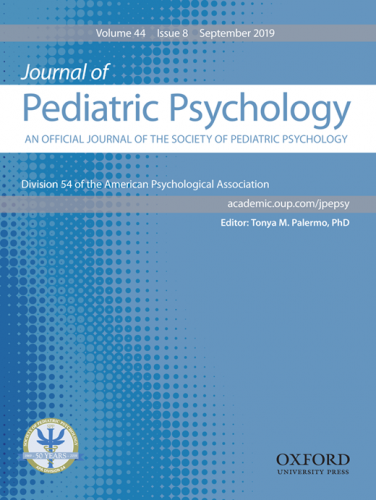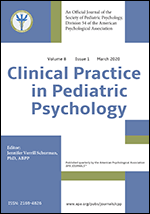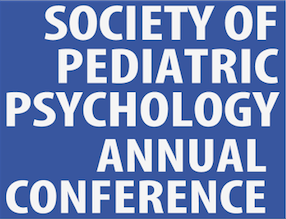Fact Sheet: Grief in Children and Adolescents
Bereavement refers to the objective experience of losing a loved one by death, whereas grief refers to one’s subjective experience. In other words, grief represents the emotional, cognitive, behavioral, physical, and spiritual reactions that a bereaved child or adolescent experiences following the death of their loved one. Mourning is the cultural experience or observation of the loss.
Prevalence and Course
Most young people experience the death of at least one loved one (e.g., family member, friend) at some point in their childhood. In fact, an estimated 1 out of 14 children in the U.S. will experience the death of a parent or sibling before they reach the age of 18. Over 4.9 million youth are bereaved, and the number more than doubles by age 25, to 12.8 million.
Health and Psychosocial Consequences
Grief reactions vary widely among bereaved youth and may include fluctuations in emotions (e.g., confusion, sadness, anger, worry) and behavior (e.g., acting out, social withdrawal, sleep disturbance) that typically return to baseline over time. Some bereaved youth may also experience increased anxiety (particularly for younger children), mood changes including depression (particularly for adolescents), and decline in academic performance. Bereavement in childhood has been associated with higher rates of physical health problems and mortality later in life.
Evidence-based Assessment
While normative grief symptoms gradually start to lessen over time, complicated or prolonged grief is persistent and intense, causing extreme distress and impairment in daily functioning. In these circumstances, psychological evaluation is required and should include assessment of existing social supports, caregiver functioning, externalizing behaviors, and symptoms of depression, anxiety, and post-traumatic stress. Assessing for risk of suicide is particularly relevant for bereaved children, who may express a wish to be reunited with their loved one. Available measures include the Hogan Inventory for Bereavement- Short Form (Children and Adolescents; HIB-SF-CA), the Inventory for Complicated Grief–Revised for Children (ICG-RC), and the Complicated Grief Assessment-Child/Adolescent Version.
Evidence-based Interventions
Most bereaved children will not require intervention for their grief, and most families will not seek formal therapy. As such, parents, teachers, guidance counselors and other social supports play a vital role in supporting bereaved children and adolescents. Allowing children to speak openly and ask questions about their loss, providing them with age-appropriate psychoeducation, facilitating a consistent routine, and encouraging continuing bonds with their loved one will support healthy normative grieving. For children whose grief is complicated by trauma, trauma-informed cognitive behavioral therapy (TF-CBT) and Trauma and Grief Component Therapy for Adolescents (TGCT-A) may be beneficial. Group programs focused on parenting (i.e., Resilient Parenting for Bereaved Families, formerly The Family Bereavement Program) have been beneficial for parentally bereaved youth and their caregivers. More research is needed in the area of individual therapy for bereaved children.
Culture, Diversity, Demographic, and Developmental Factors
How a child experiences, understands, and copes with the loss of a loved one is related to their developmental stage, previous experience with loss, individual temperament, family factors, religion, and culture. Research on the impact of demographic factors on grief and bereavement is limited. Girls and adolescents have been found to be at increased risk for complicated grief and internalizing symptoms, while elementary school aged children and boys are at increased risk for social challenges. Compared to white children, black children are more likely to experience the death of a parent or sibling by age 20 and may also be at increased risk for anxiety following the death of a loved one.
Resources
- www.childrengrieve.org
- www.dougy.org
- www.opentohope.com
- https://www.schoolcrisiscenter.org/
- https://www.judishouse.org/cbem
Authors : Amanda L. Thompson, PhD, Molly A. Gardner, PhD, Claire C. Russell, PhD, & Dara M. Steinberg, PhD
Date of Last Update: July 2019
References
- Cohen, J. A., Mannarino, A. P., & Deblinger, E. (2016). Treating trauma and traumatic grief in children and adolescents. New York, NY: Guildford Press.
- Currier, J. M., Holland, J. M., & Neimeyer, R. A. (2007). The effectiveness of bereavement interventions with children: A meta-analytic review of controlled outcome research. Journal of Clinical Child and Adolescent Psychology, 36(2), 253-259.
- Hoffmann, R., Kaiser, J., & Kersting, A. (2018). Psychosocial outcomes in cancer-bereaved children and adolescents: A systematic review. Psycho-Oncology, 27, 2327-2338.
- Hogan, N.S., Schmidt, L.A., Howard Sharp, K.M., Barrera, M., Compas, B.E., Davies, B., Fairclough, D.L., Gilmer, M., Vannatta, K., & Gerhardt, C.A. (2019) Development and testing of the Hogan Inventory of Bereavement short form for children and adolescents. Death Studies, DOI: 10.1080/07481187.2019.1627034
- Judi’s House. (2019). Childhood Bereavement Estimation Model: Understanding Childhood Grief in the U.S. Retrieved from www.judishouse.org/CBEM.
- Melhem NM, Moritz G, Walker M, Shear MK, Brent D. Phenomenology and correlates of complicated grief in children and adolescents. J Am Acad Child Adolesc Psychiatry. 2007 Apr;46(4):493-9
- Nader, K. & Prigerson, H. (2009b). Complicated Grief Assessment—Child and Adolescent scales manual. Austin, TX: Two Suns.
- Saltzman, W., Layne, C., Pynoos, R., Olafson, E., Kaplow, J., & Boat, B. (2017). Trauma and Grief Component Therapy for Adolescents: A Modular Approach to Treating Traumatized and Bereaved Youth. Cambridge, UK: Cambridge University Press.
- Sandler, I., Ayers, T. S., Tein, J. Y., Wolchik, S., Millsap, R., Khoo, S. T., Kaplan, D., Ma, Y., Luecken, L., Schoenfelder, E., & Coxe, S. (2010). Six-year follow-up of a preventive intervention for parentally-bereaved youth: A randomized controlled trial. Archives of Pediatrics and Adolescent Medicine, 164, 907-914.
- Umberson, D., Olson, J., Crosnoe, R., Liu, H., Pudrovska, T., & Donnelly, R. (2017). Death of family members as an overlooked source of racial disadvantage in the United States. Proc Natl Acad Sci USA, 114 (5), 915-920.
- Youngblut, J., Brooten, D., Del-Moral, T., Cantwell, G.P., Totapally, B., & Yoo, C. (2019). Black, White, and Hispanic Children’s Health and Function 2-13 Months After Sibling Intensive Care Unit Death. Journal of Pediatrics, 210, 184-193.
- Yu, Y., Liew, Z., Olsen, J., Vestergaard, M., Fu, B., … & Li, J. (2017). Association of mortality with the death of a sibling in childhood. JAMA Pediatrics, 171, 538-545.



